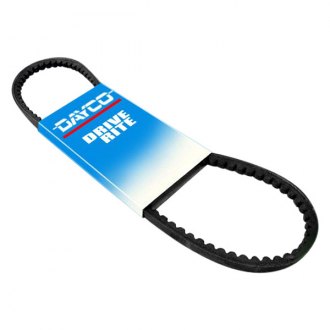Dayco belts play a critical role in the smooth operation of various machinery, from automobiles to industrial equipment. These belts are known for their durability, reliability, and efficiency, making them a preferred choice for many manufacturers and technicians. To ensure you get the most out of your Dayco belts, it’s essential to understand their functions, common issues, and maintenance practices. This guide will delve into these aspects, providing you with comprehensive insights into maintaining the longevity and performance of your Dayco belts.
Understanding Dayco Belts
Dayco belts are designed to transfer power between different components of a machine. They are used in various applications, including automotive engines, industrial machines, and agricultural equipment. These belts come in different types, each suited for specific tasks. The most common types include V-belts, serpentine belts, and timing belts.
V-Belts
V-belts are typically used in applications where high power transmission is required. They are named for their V-shaped cross-section, which helps them grip the pulleys securely and transfer power efficiently. V-belts are often used in automotive engines to drive components like the alternator, water pump, and power steering pump.
Serpentine Belts
Serpentine belts are a more modern development, commonly used in automotive engines to drive multiple peripheral devices such as the alternator, power steering pump, water pump, air conditioning compressor, and more. They are called serpentine belts because they wind through multiple pulleys in a serpentine or snake-like pattern. These belts are known for their flexibility and ability to maintain consistent tension, reducing the need for frequent adjustments.
Timing Belts
Timing belts have teeth that engage with corresponding grooves on the pulleys, ensuring synchronized movement of the engine’s camshaft and crankshaft. This synchronization is crucial for the proper timing of the engine’s valves and pistons. Timing belts are commonly found in automotive engines but are also used in various industrial applications where precise timing is essential.
Common Issues with Dayco Belts
Despite their durability, Dayco belts can experience wear and tear over time. Recognizing common issues early can help prevent more significant problems and extend the life of your belts.
Cracking and Fraying
One of the most common issues with belts is cracking and fraying. This typically occurs due to prolonged exposure to heat and friction. Regularly inspect your belts for visible signs of wear and replace them if you notice any cracks or frayed edges.
Glazing
Glazing happens when the belt’s surface becomes smooth and shiny due to slipping against the pulleys. This can reduce the belt’s grip and efficiency, leading to poor performance. If you notice glazing, it’s time to replace the belt and check the pulleys for proper alignment.
Misalignment
Misaligned pulleys can cause belts to wear unevenly, leading to premature failure. Ensure that all pulleys are correctly aligned to maintain even wear and efficient power transmission. Using a straight edge or alignment tool can help you achieve proper alignment.
Noise
Squealing or chirping noises often indicate that a belt is slipping or that the tension is incorrect. Check the tension and adjust it as needed. In some cases, replacing the belt may be necessary if it has become too worn.
Maintenance Practices for Dayco Belts
Proper maintenance is key to extending the life of your Dayco belts and ensuring they operate efficiently. Here are some essential maintenance practices:
Regular Inspections
Regularly inspect your belts for signs of wear, damage, and proper tension. Look for cracks, fraying, glazing, and any signs of misalignment. Catching issues early can prevent more significant problems down the line.
Tension Adjustment
Ensure that your belts maintain the proper tension. Over-tightening can cause excessive wear and stress on the belt and pulleys, while under-tightening can lead to slipping and poor performance. Use a belt tension gauge to achieve the correct tension for your specific application.
Cleanliness
Keep the belts and pulleys clean and free of debris. Dirt and grime can cause additional wear and reduce the efficiency of power transmission. Regularly clean the belts with a mild detergent and water, and ensure the pulleys are free of oil and grease.
Replacement
Even with the best maintenance practices, belts will eventually need to be replaced. Follow the manufacturer’s recommendations for replacement intervals, and don’t wait until a belt fails completely. Regular replacement can prevent unexpected downtime and damage to other components.
Choosing the Right Belt
When replacing a belt, ensure you choose the correct type and size for your application. Using the wrong belt can lead to poor performance and premature failure. Consult the manufacturer’s specifications and guidelines to select the appropriate Dayco belt for your needs.
Conclusion
Dayco belts are integral components in many mechanical systems, providing reliable and efficient power transmission. By understanding the different types of belts, recognizing common issues, and following proper maintenance practices, you can ensure the longevity and optimal performance of your Dayco belts. Regular inspections, correct tension adjustment, cleanliness, and timely replacement are key to keeping your machinery running smoothly and efficiently. With proper care, your Dayco belts will continue to deliver the durability and reliability you depend on.






Comments